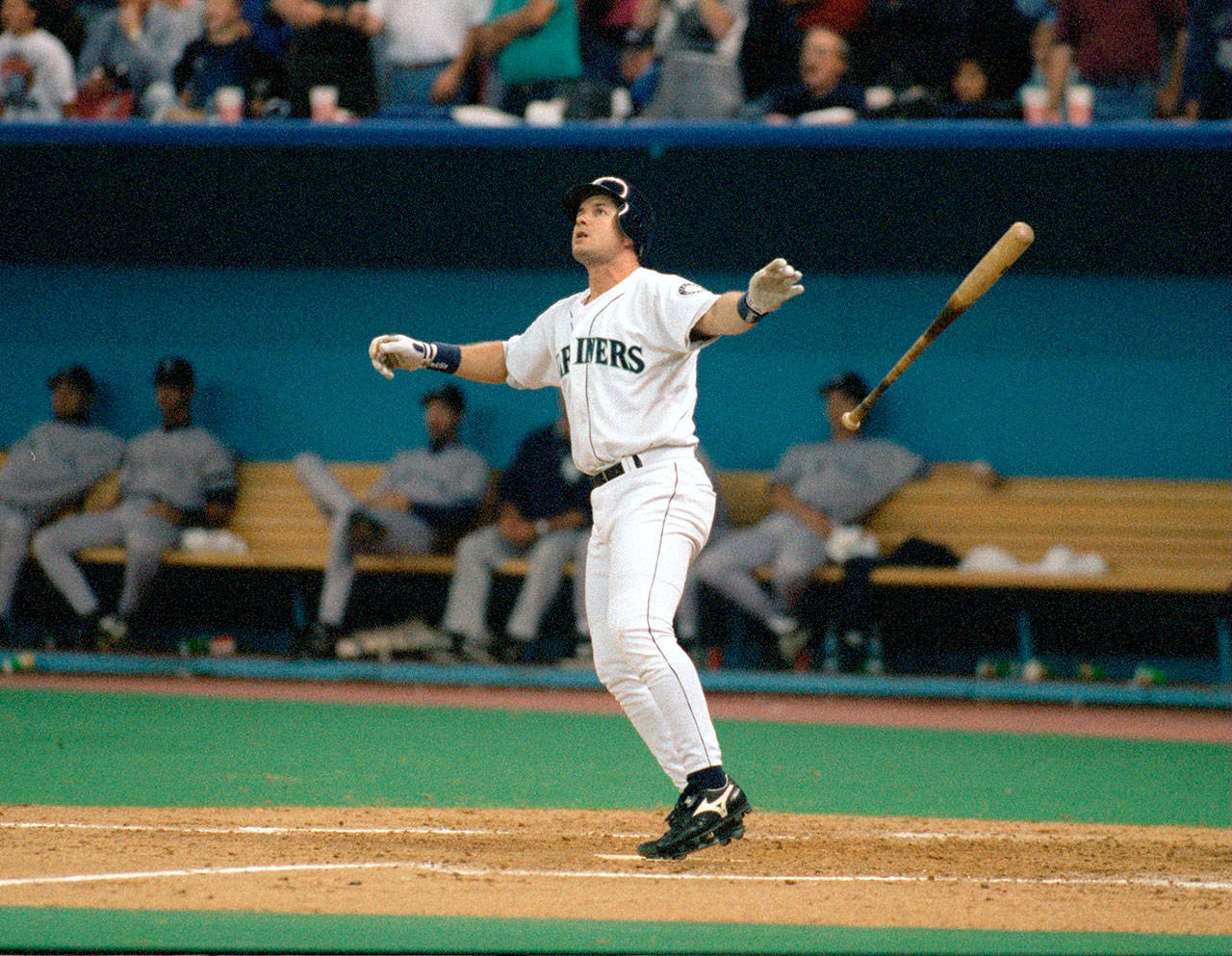By Ryan Divish
The Seattle Times
He’s been called many things: the best hitter and most beloved player to ever put on a Mariners uniform, the most productive designated hitter since the creation of the position and the one hitter most of the top pitchers of the late 1990s and early 2000s didn’t want to see come to the plate with the game on the line.
But now, you can call Edgar Martinez by the one thing every professional baseball player dreams of when he breaks into the big leagues —a Hall of Famer.
If you listen hard enough to the rustling air of the Puget Sound, you can almost hear the late Dave Niehaus, himself a Hall of Famer, faintly screaming “My Oh My!” in celebration.
On Tuesday, Martinez received baseball’s highest honor, induction into the Baseball Hall of Fame in Cooperstown. He received the congratulatory call from Jack O’Connell, the longtime secretary of the Baseball Writers’ Association of America, at a Manhattan hotel with his family by his side.
In his 10th and final year on the ballot, Martinez received enough votes on ballots cast by eligible members of the Baseball Writers’ Association of America to eclipse the 75 percent needed for induction.
The 2019 Hall of Fame selections will be added to a class that also features reliever Lee Smith and designated hitter/outfielder Harold Baines, who were chosen by the Modern Era Baseball Committee for the induction ceremony on July 21.
It will be a return trip to Cooperstown for Martinez, who attended the induction of close friend and teammate Ken Griffey Jr. in 2016. He will join Griffey and Randy Johnson —two of his teammates from some of the Mariners’ best seasons —in the Hall of Fame. But while Griffey and Johnson eventually left the organization, Martinez remained —a foundational rock in the middle of the order. It made him beloved by a fan base and a city that recognized not only his immense skill and production on the field, but also his unassuming attitude and kind heart off the field.
It’s been an unexpected and gradual rise in his up-and-down candidacy that started with a promising 36.2 percent in 2010 —his first year of eligibility —and hit rock bottom with 25.2 percent in 2014.
However, a trend toward younger, more progressive voters in the BBWAA becoming eligible, the increased use of sabermetric analysis to validate his resume and a growing understanding of Martinez’s contributions started a movement upward to 43.4 percent in 2016, 58.6 percent in 2017 and an agonizingly close 70.4 percent in 2018. But that steady trend upward finally pushed him over threshold in his final year of eligibility.
The Mariners’ massive social media blitz over the past few offseasons and retirement of Martinez’s number last August also played a role in the process.
Consistently humble and never one to seek the spotlight, Martinez always has avoided campaigning for himself or his accomplishments during this nine-year process. He even admitted to thinking that his Hall of Fame chances were extinguished after the 2014 results.
But much like his playing career in Seattle, the appreciation of his accomplishments from the outside world came later than it should have.
Martinez hit .312 with a .418 on-base percentage and a .515 slugging percentage while amassing 1,219 runs, 2,247 hits, 514 doubles, 309 home runs, 1,261 RBIs and 1,283 walks in 2,055 career games over 18 seasons —all in a Mariners uniform.
He is one of 14 players in MLB history to post a lifetime slash line (batting average, on-base percentage and slugging percentage) of at least .310/.410/.510 in at least 5,000 career plate appearances. Of the 13 other players to do so, nine are Hall of Famers —Ty Cobb, Jimmie Foxx, Lou Gehrig, Hank Greenberg, Rogers Hornsby, Stan Musial, Babe Ruth and Ted Williams. He becomes the 10th Hall of Famer of that group.


